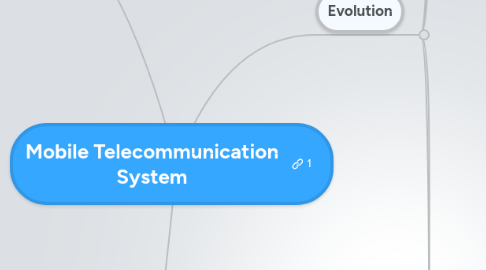
1. Communication Networks
1.1. Information Transport Techniques
1.1.1. Circuit-Switching
1.1.1.1. circuit (voice)
1.1.2. Packet-Switching
1.1.2.1. packets (data)
1.2. OSI - Open Systems Interconnection
1.2.1. Application Layer
1.2.1.1. HTTP - Hypertext Transfer Protocol
1.2.1.2. SMTP - Simple Mail Transfer Protocol
1.2.2. Presentation Layer
1.2.3. Session Layer
1.2.4. Transport Layer
1.2.4.1. UDP - User Datagram Protocol
1.2.4.2. TCP - Transmission Control Protocol
1.2.5. Network Layer
1.2.5.1. IP - Internet Protocol
1.2.6. Link Layer
1.2.7. Physical Layer
1.3. Protocol Stack
1.3.1. Control Plane
1.3.2. User Plane
2. Wireless Communication
2.1. Modulation
2.1.1. Modulator
2.1.2. Symbols
2.1.3. Schemes
2.1.3.1. BPSK - Binary Phase Shift Keying
2.1.3.2. QPSK - Quadrature Phase Shift Keying
2.1.3.3. FM - Frequency Modulation
2.1.3.4. AM - Amplitude Modulation
2.1.3.5. PM - Phase Modulation
2.2. Multiple Access
2.2.1. FDMA
2.2.2. TDMA
2.2.3. CDMA
2.3. Radio Channel
2.3.1. Rx
2.3.2. Radio Wave
2.3.2.1. Propagation Loss
2.3.2.2. Noise
2.3.2.2.1. Error Correction
2.3.2.3. Fading
2.3.2.3.1. Diversity Processing
2.3.3. Tx
3. Evolution
3.1. 1G
3.1.1. analog communication
3.1.2. low capacity, high cost, unsecured connection
3.1.3. NMT - Nordic Mobile Telephone, Scandinavia
3.1.4. AMPS - Advanced Mobile Phone System, USA
3.1.5. TACS - Total Access Communication System, UK
3.2. 2G
3.2.1. GSM - Global System for Mobile Communications, Europe
3.2.1.1. FEATURES
3.2.1.1.1. data encryption, data compression, error correction, higher capacity
3.2.1.1.2. SMS - Short Message Service
3.2.1.1.3. SIM - Subscriber Identity Module
3.2.1.2. GPRS - General Packet Radio Service
3.2.1.3. EDGE - Enhanced Data Rates for Global Evolution
3.2.1.4. ARCHITECTURE
3.2.1.4.1. MS - Mobile Station
3.2.1.4.2. RAN - Radio Access Network
3.2.1.4.3. CN - Core Network
3.2.2. cdmaOne, USA
3.3. 3GPP (Third Gneration Partnership Project)
3.3.1. Organizational Partners
3.3.1.1. ARIB (Association of Radio Industries and Businesses)
3.3.1.2. ATIS (Alliance for Telecommunications Industry Solutions)
3.3.1.3. CCSA (China Communications Standards Association)
3.3.1.4. ETSI (European Telecommunications Standards Institute)
3.3.1.5. TTA (Telecommunications Technology Association )
3.3.1.6. TTC (Telecommunication Technology Committee)
3.3.2. Standardized 3G Output
3.3.2.1. Functionality
3.3.2.2. Procedures
3.3.2.3. Services
3.4. 3G
3.4.1. UMTS - Universal Mobile Telecommunication System
3.4.1.1. SPECIFICATIONS
3.4.1.1.1. Release 3/'99
3.4.1.1.2. Release 4
3.4.1.1.3. Release 5
3.4.1.1.4. Release 6
3.4.1.1.5. Release 7
3.4.1.2. ARCHITECTURE
3.4.1.2.1. UE - User Equipment
3.4.1.2.2. RAN - Radio Access Network
3.4.1.2.3. CN - Core Network
3.4.1.3. RELEVANT CODES/IDs
3.4.1.3.1. MS-ISDN - Mobile Station Integrated Services Digital Network-Number
3.4.1.3.2. IMEI - International Mobile Station Equipment Identity
3.4.1.3.3. IMSI - International Mobile Subscriber Identity
3.4.2. cdma2000
3.5. 4G
3.5.1. LTE - Long Term Evolution
3.5.1.1. Mobile WiMax - Worldwide Interoperability for Microwave Access
